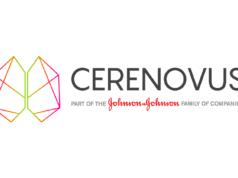
When comparing outcomes for acute ischaemic stroke patients treated at various levels of stroke centres, patients who received care at comprehensive stroke centres (CSC) or thrombectomy-capable stroke centres (TSC) were more likely to receive rapid treatment with clot-busting medication and/or mechanical clot removal—and be discharged home or to rehabilitation centres— compared to those treated at primary stroke centres (PSC) in the USA.
This was the key finding of preliminary research from a national study presented at the International Stroke Conference (ISC 2022; 9–11 February, New Orleans, USA).
“Certification status of the centre where a stroke patient receives care matters, and it is important to know that the specific requirements to become a CSC or TSC are validated by these data. The quality of care is higher in these centres, as also confirmed by our findings,” said lead author of the study Radoslav Raychev (University of California, Los Angeles [UCLA], Los Angeles, USA).
PSCs are hospitals with the necessary resources to manage patients with acute ischaemic stroke—the most common type of stroke that is caused by a clot blocking an artery supplying blood to areas of the brain. CSCs are hospitals that meet specific standards for managing more severe ischaemic and haemorrhagic strokes that require advanced endovascular and surgical interventions including mechanical thrombectomy. TSCs meet all the rigorous standards for performing a thrombectomy and are essentially the same as CSCs in treating acute ischaemic strokes, according to an American Heart Association (AHA) press release. However, unlike CSCs, TSCs may not have the necessary resources to treat the less common and more complex haemorrhagic strokes.
“TSC is a relatively new designation, introduced in 2018 by the accreditation agencies in cooperation with the American Heart Association/American Stroke Association,” Raychev added. “This is the first study to include the new thrombectomy-capable designation when comparing outcomes in the treatment of ischaemic stroke at the different levels of stroke centres.”
Researchers compared outcomes and quality of care indicators for 84,903 patients (median age=70, 49.2% female) with ischaemic stroke treated between 2018 and 2020 at stroke centres participating in the Get With The Guidelines (GWTG) Stroke Registry. The study analysed 185 CSCs, 29 TSCs and 169 PSCs in the registry. As part of their treatment, each patient had received either intravenous clot-busting medication or thrombectomy to restore blood flow in a blocked artery.
Among their findings on quality of care measures, the study found more patients treated at a CSC or TSC had intravenous clot-busting treatment started within the target time period set by GWTG than those treated at a PSC, and that the thrombectomy procedure started within the target time period set by GWTG compared to patients treated at a PSC—although the difference between TSC and PSC timing was not statistically significant.
“Our data indicate that nearly one quarter of all endovascular thrombectomies in the USA are being performed in primary stroke centres,” Raychev said. “This is unfortunate because PSCs are not required to have close oversight and implementation of thrombectomy-specific American Stroke Association standards. We hope that clinicians recognise the importance of the certification status and its impact on the quality of acute stroke care, and we hope they advocate for appropriate changes within their institutions.”
Patients also had better outcomes if they were treated at a CSC or TSC, the AHA release states, with the analysis finding:
- CSC and TSC patients were more likely to have their blood flow successfully restored after endovascular thrombectomy than PSC patients.
- Fewer patients treated at CSC and TSC died or were discharged to hospice than PSC patients.
- More CSC and TSC patients were discharged to their homes or to rehabilitation facilities than PSC patients (however, the difference between TSC and PSC rates was not statistically significant).
- Overall, there was no significant difference in outcomes between CSC and TSC patients.
The data identified differences in the baseline characteristics of the stroke patients at each centre status. The patients treated at TSCs and CSCs tended to have more severe strokes. They were also more likely to have been transferred from another hospital because they required a higher level of care, and they arrived at the centres after a longer time since the onset of their stroke symptoms. The study’s results underscore the value of participating in the certification process to improve stroke care, the release adds.
“Our findings demonstrate that patients with acute ischaemic stroke receive a better quality of care and have a higher chance of improved outcome when treated at a Comprehensive or Thrombectomy-capable stroke centre,” Raychev said. “Patients should keep this in mind when researching the level of stroke care available in their area. The good news is that, in most parts of the country, the emergency medical systems of acute stroke care are designed to triage and expedite patients to appropriate centres based on the severity of their stroke symptoms. Patients and their loved ones should always remember to call 911 when there is a suspected stroke.”
“Everyone involved in the acute stroke chain of survival should be aware of the importance of certification status. One of the biggest challenges in achieving TSC-level status is that a PSC must perform 15 or more endovascular thrombectomies per year. In our study, the median volume at PSCs was 32—therefore, most PSCs far exceed the minimum thrombectomy volume requirements. Advancing certification for PSCs that meet the volume requirement is very feasible, yet it does require coordinated efforts and additional resources. Our data should serve as strong evidence for initiating such important changes and ultimately elevate the standard of acute ischaemic stroke care nationwide,” Raychev said.
The analysis is limited, the researchers state, by the relatively small number of TSCs included in the registry. Another limitation was that the sample only included centres certified by two accreditation agencies, The Joint Commission and DNV (Det Norske Veritas) Healthcare. Centres that have received state-specific designations or were certified by other national accreditation agencies were not part of the study.













